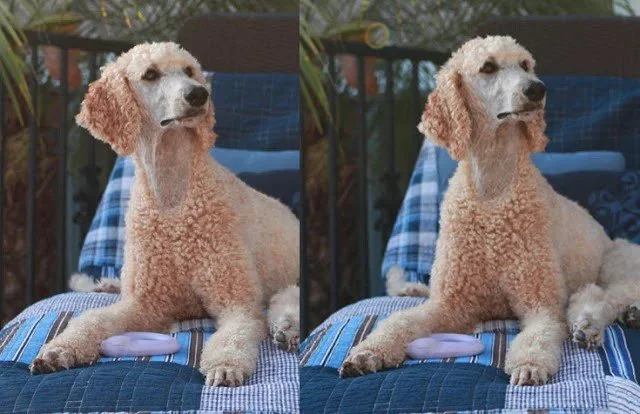Our dogs are master communicators. Depending on the situation and environment, slight changes can mean very different things. Can you see the difference here?
I just wrote about this in September, but here’s some more
September blog - Greeting strange dogs
Todays blog.
He reached his hand out to Riggs; and Riggs responded with a deep but quiet growl. The man quickly pulled his hand back, good idea. I sat on the stairs leading to our downstairs familyroom; talking to the two workers who had been at our house for a couple of days. Riggs had given him a clear a precise message, don’t touch me.
For days the workers were very interested in the dogs that were on the other side of the gates. The people and dogs could see each other but both were given space by the gates (I love gates). But when they were finishing up and I breached the gate to check out the results of their work, Riggs followed. I’d be explaining that they could touch the blonde one (Elsa) but not the brown and white one (Riggs). “He doesn’t like to be touched by strangers” I explained. So when he breached the gate to join me; the man said “he’s in.” Even still he reached out to invite Riggs to touch. Nope.
As many of you already know; I am a huge “non touch” advocate for our dogs. The more you learn about dogs the more you understand that the need to touch is an odd one. I get it, don’t get me wrong. I know sometimes it just seems like the thing to do. But it isn’t the thing to do; unless the dog invites you to do it. Dogs give us loads of information but we tend to just ignore it and do what we want to do.
Riggs growled at the man who reached out to him, letting him know that he was not interested. Not only does Riggs not want strangers to touch him; he was more than likely guarding his Mom (me) at the time. As soon as he came onto the other side of the gate he checked in with me to make sure that I was alright.
Is it possible to admire without touching? Most defintely.
But the reach was not the only mistake made by the workers. The other worker who had not reached out was giving Riggs direct eye contact. She was smitten by him and couldn’t stop staring. Riggs let her know that her staring was making him uncomfortable by growling a second time. Not once did Riggs move towards them or attempt any type of aggression. His messages were just that, communications about how he was feeling.
The first one who reached out explained to me that his Father had taught him to offer your hand and if the animal didn’t seem to want to be touched, then you didn’t. Pretty good, except for the reach part.
What should have happened
Use your peripheral vision. Don’t stare directly at a dog upon meeting. It is an unwelcome behavior that we humans tend to do. Use your body to signal no intent. Stand loose and slightly sideways; talk to the guardian, not the dog. Keep your hands (palm in) and arms to your side casually. Don’t stand stiffly, think loosey goosey. Talk to the guardian about the dog and if they enjoy interactions. If they say “yes” then you need to wait for the dog to decide.
What you are waiting for with your hands to your side (keep your hands to yourself); is for the dog to approach you. But, there are all sorts of approaches so just because a dog moves towards you does not mean that they want you to touch them. They might just want to smell you and then move away. If they sniff or nuzzle your hand, you can turn it palm out. And if they engage with that, maybe a little under the chin scratch. And that’s it.
There may be dogs that want more but you need to be very careful. A seemingly good scratch or pet can go bad very quickly. It might seem nice to start and then maybe it’s too much and the dog reacts. So less is more. Admire from afar. We truly do not need to pet or touch all the dogs. ;)

